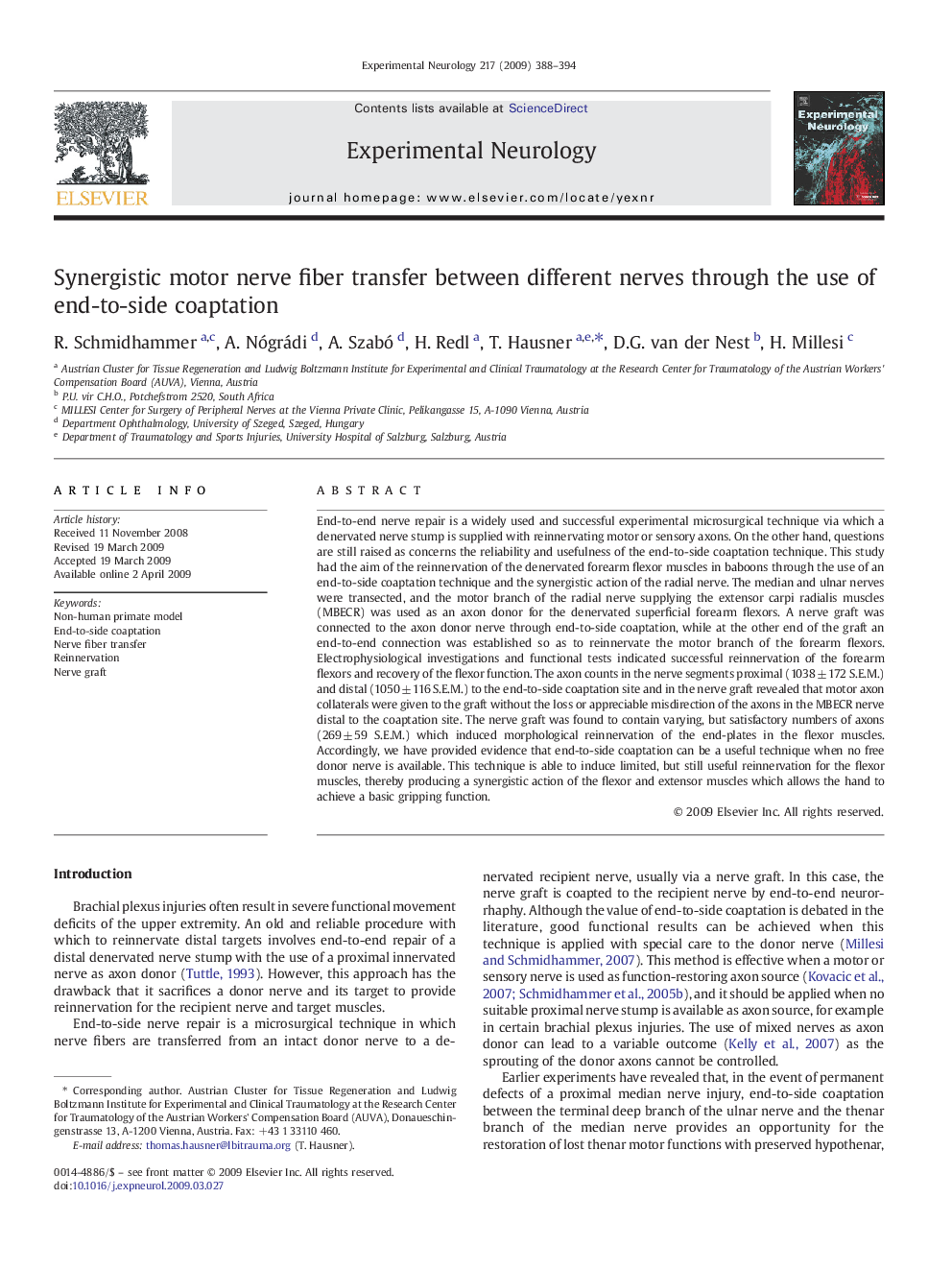| کد مقاله | کد نشریه | سال انتشار | مقاله انگلیسی | نسخه تمام متن |
|---|---|---|---|---|
| 3056341 | 1186563 | 2009 | 7 صفحه PDF | دانلود رایگان |

End-to-end nerve repair is a widely used and successful experimental microsurgical technique via which a denervated nerve stump is supplied with reinnervating motor or sensory axons. On the other hand, questions are still raised as concerns the reliability and usefulness of the end-to-side coaptation technique. This study had the aim of the reinnervation of the denervated forearm flexor muscles in baboons through the use of an end-to-side coaptation technique and the synergistic action of the radial nerve. The median and ulnar nerves were transected, and the motor branch of the radial nerve supplying the extensor carpi radialis muscles (MBECR) was used as an axon donor for the denervated superficial forearm flexors. A nerve graft was connected to the axon donor nerve through end-to-side coaptation, while at the other end of the graft an end-to-end connection was established so as to reinnervate the motor branch of the forearm flexors. Electrophysiological investigations and functional tests indicated successful reinnervation of the forearm flexors and recovery of the flexor function. The axon counts in the nerve segments proximal (1038 ± 172 S.E.M.) and distal (1050 ± 116 S.E.M.) to the end-to-side coaptation site and in the nerve graft revealed that motor axon collaterals were given to the graft without the loss or appreciable misdirection of the axons in the MBECR nerve distal to the coaptation site. The nerve graft was found to contain varying, but satisfactory numbers of axons (269 ± 59 S.E.M.) which induced morphological reinnervation of the end-plates in the flexor muscles. Accordingly, we have provided evidence that end-to-side coaptation can be a useful technique when no free donor nerve is available. This technique is able to induce limited, but still useful reinnervation for the flexor muscles, thereby producing a synergistic action of the flexor and extensor muscles which allows the hand to achieve a basic gripping function.
Journal: Experimental Neurology - Volume 217, Issue 2, June 2009, Pages 388–394